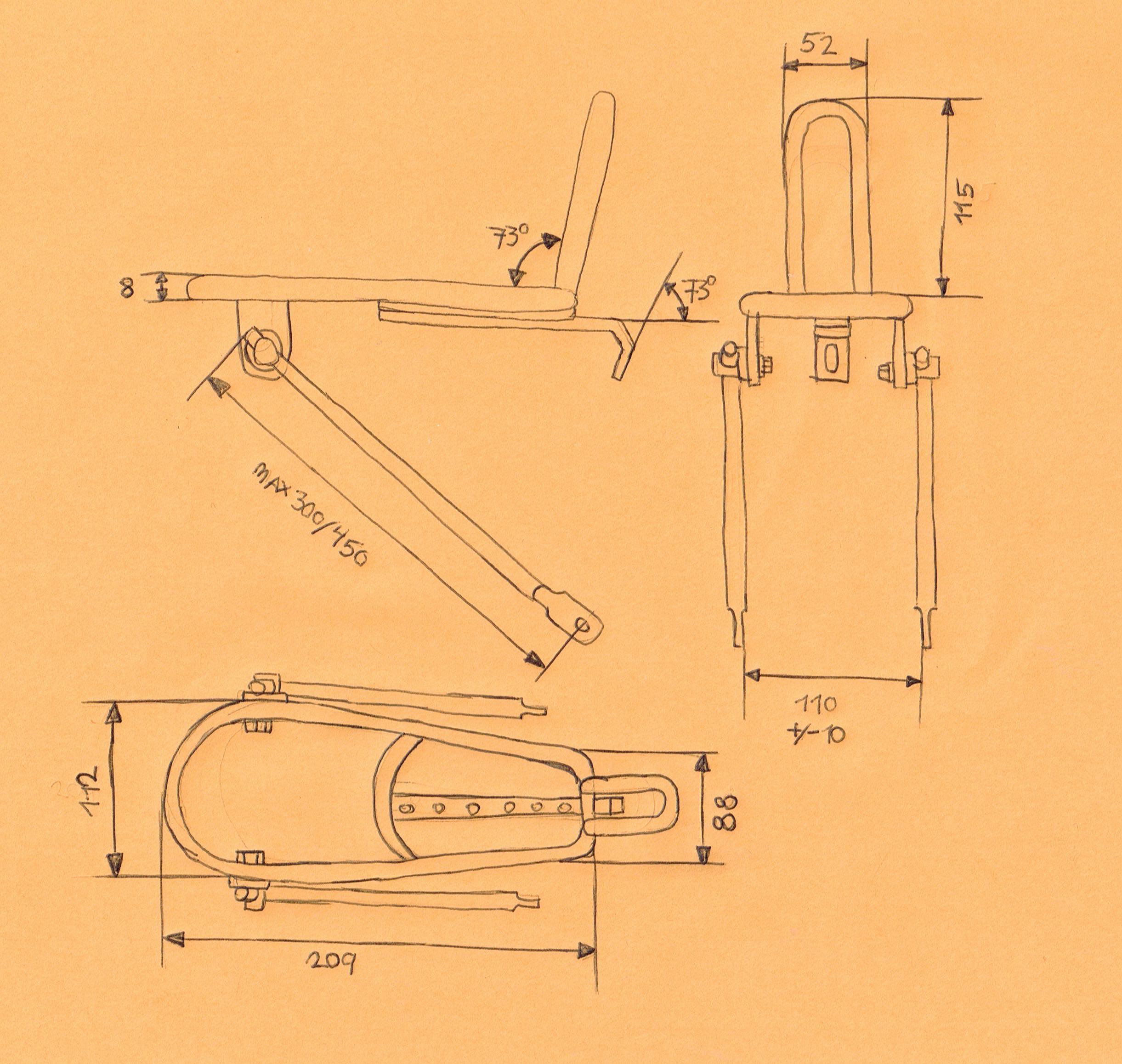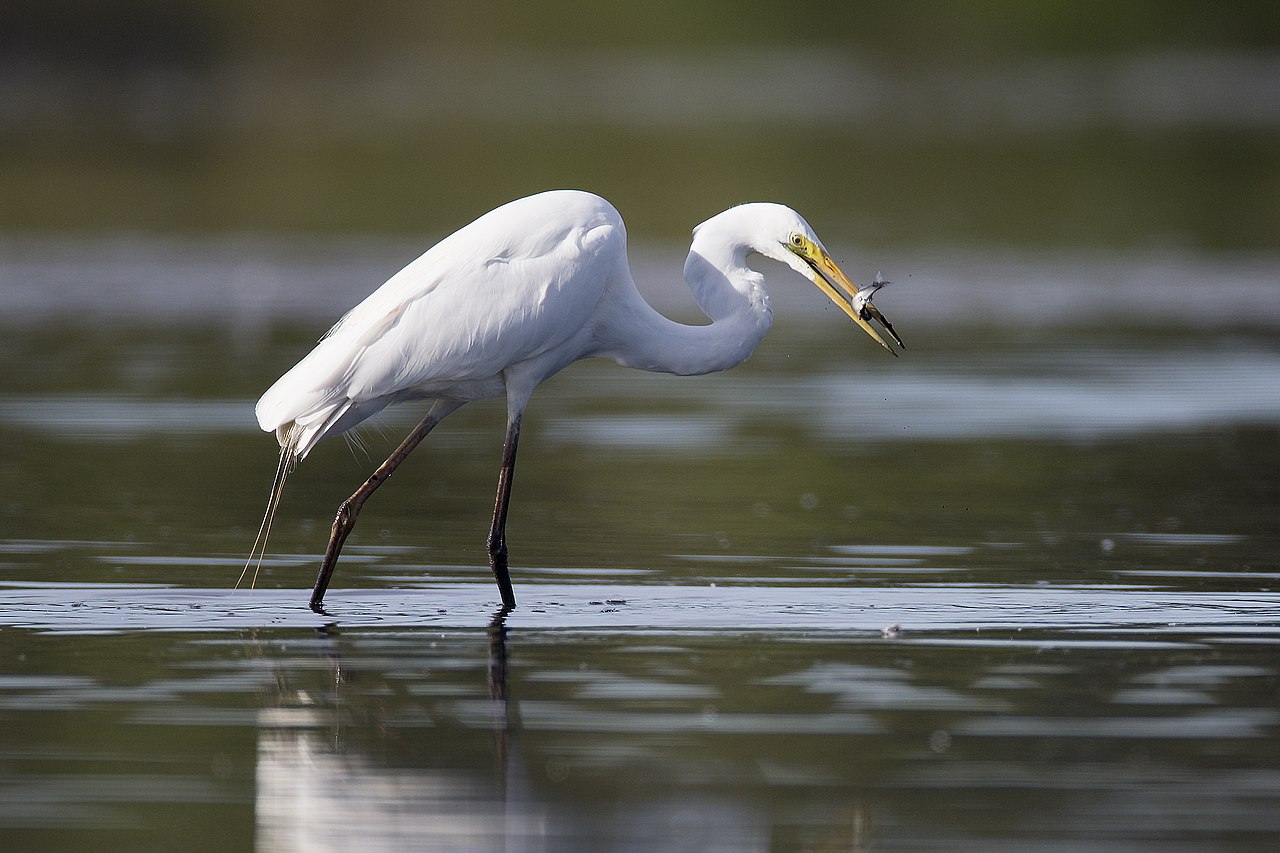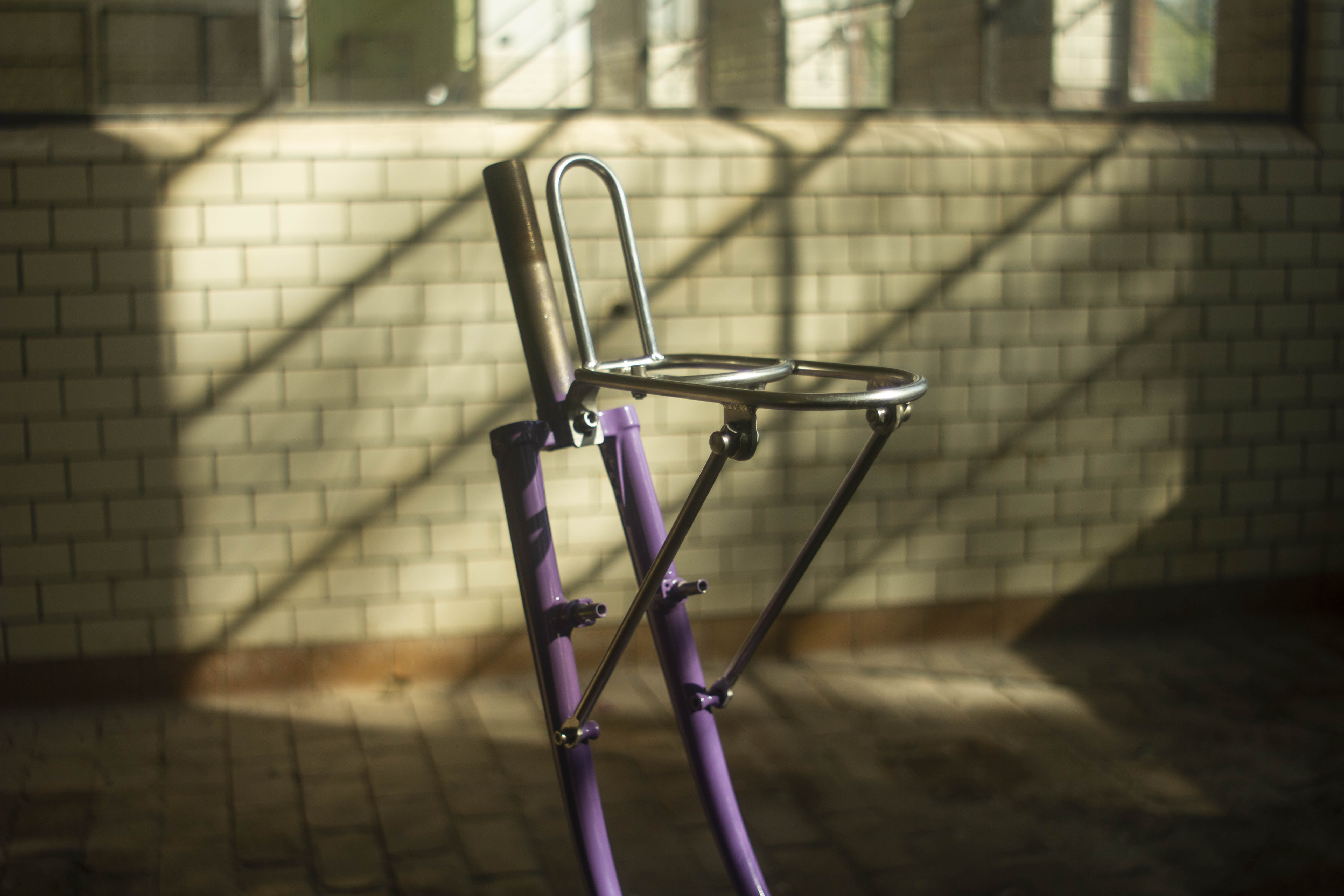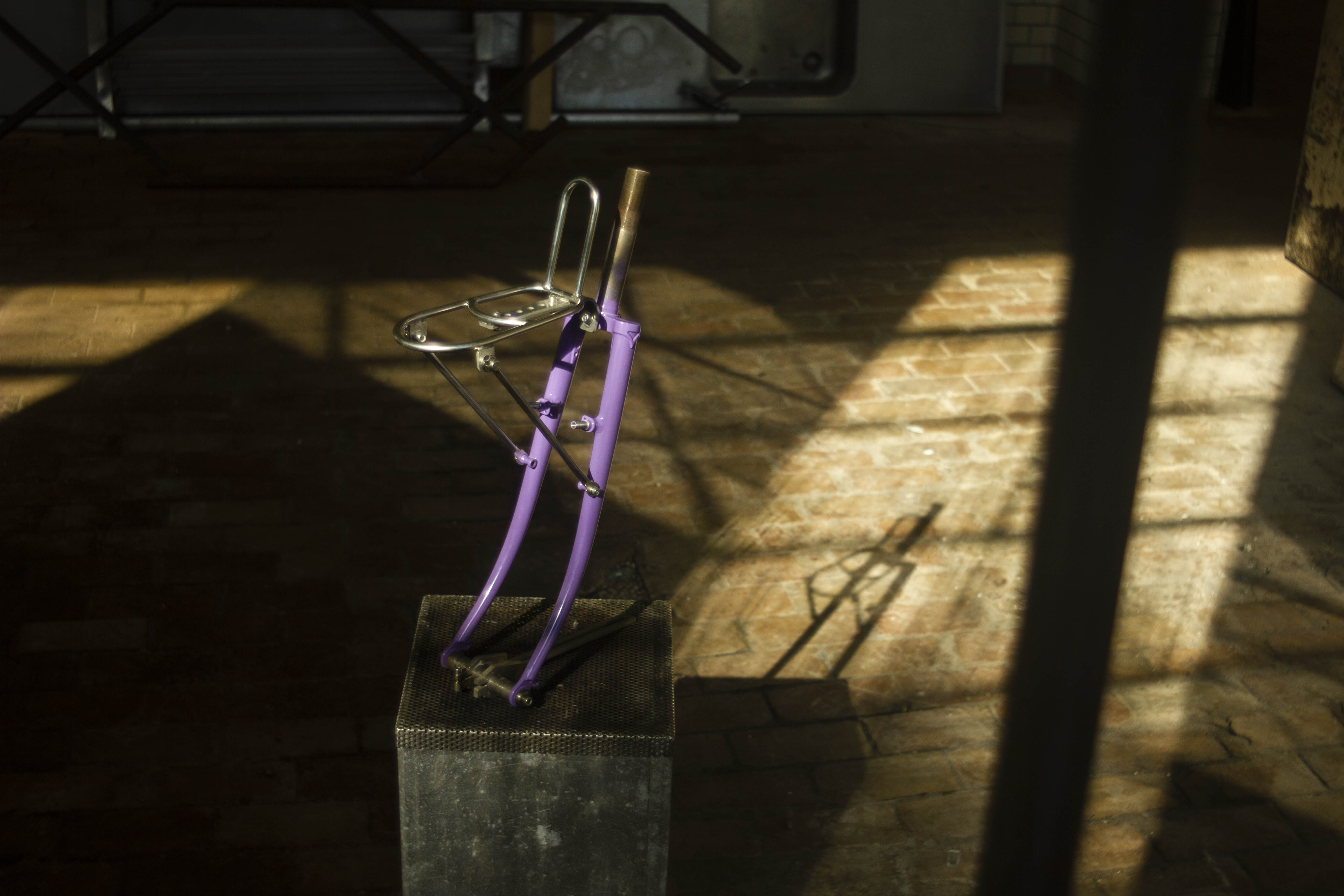Silver Heron
The Silver Heron front rack is a small and aestically, yet functional rack.
Inspirered by the elegance of a hunting silver heron this rack has a tall tombstone to support your luggage and soft bends that mimicks the long neck of the bird.
The entire rack and hardware is made from stainless steel and will stay shiny for many years.
You can use it to support your handlebar or randonneur bag or strap whatever you need to bring along straight to the platform.
This is a rack deisgned for light loads on long dusty roads!
✰ Price: 1200 DKK / 160 EUR ✰
For information on ordering see: ordering page.
Please include length of legs in your order (300mm for mid-fork mounts, 450mm for dropout eyelets. If in doubt - go with the long ones!)
FOR YOUR SAFETY: 3-point racks are really simple and easy to install but their weak spot is the center bolt so for safety reasons I'm recommening you to use a strap between your handlebars and the tombstone and/or a decalleur if you're running a rando bag.
This is to prevent the rack from blocking your front tire in in case of emergency.
| Silver Heron | Specifications |
|---|---|
| Size | 209x112x120mm |
| Leg lengths | 300/450mm |
| Weight | 450-500g (incl. all hardware) |
| Max. load capacity | 3 kg* |
| Material | Stainless steel |
| Finish | Polished |
*Max load capacity very much depends on riding conditions and fork mount strength (especially for carbon forks). If you riding from the supermarket to your campsite with 8+ kg on paved roads I wouldn't worry about the strenght of the rack, but bombing single tracks with the same load would definitely be out of it's limits. The 3 kg limit is a sort of arbitrary safety measure. See the "FOR YOUR SAFETY" paragraph for more details on good safety practices when using a front rack.

The silver heron (Ardea alba)* is one of the most elegant and beautiful birds found in Sydfyn, Denmark.
The bird has been very rare in this part of Europe since the early 1900's when hunters started hunting it to sell the feathers for hat makers.
Due to conservation laws and a change of hat fashion (and maybe climate change?) it's population has been growing in Nothern Europe since 2000.
Today we're fortunate to be able to see this magnificent bird all year round here in Sydfyn!
*TBH it's real name is "great egret" but that English name is kinda boring so I translated the name direcly from the Danish "sølv hejre"
 Photo by JJ Harison License CC 4.0
Photo by JJ Harison License CC 4.0

